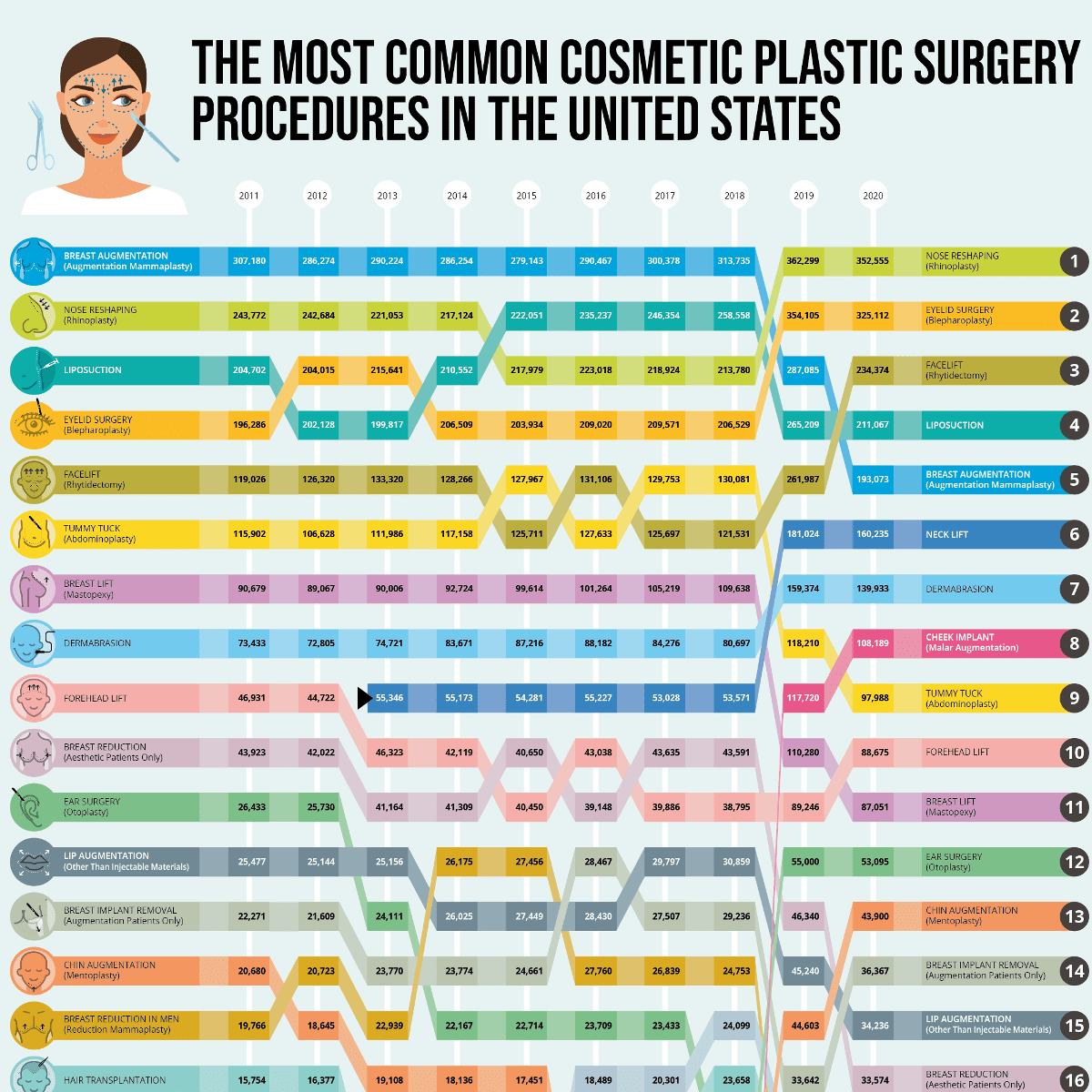While there is a growing demand for functional medicine providers and practitioners, not all functional medicine practices succeed. The right strategies are needed to successfully grow any medical practice, including functional medicine.
As more and more people seek out alternative and complementary forms of healthcare, functional medicine is becoming increasingly popular. Its focus on prevention and addressing the root cause of health concerns makes it an appealing option for many patients.
The need and demand for functional medicine practitioners are continuing to rise as the benefits and advantages of a functional medicine approach become more apparent. But this doesn’t automatically translate into a thriving functional medicine practice.
In your journey to build a successful functional medicine practice with a thriving clinic and steady stream of patients, you’ll soon discover (if you haven’t already) that many different skill sets are required. Just as important for growing your practice – perhaps more – is the need for effective growth strategies.
By understanding the importance of functional medicine in the current healthcare landscape, practitioners can position themselves to better serve the needs of their patients and grow their practices.
Identify and Focus on the Right Target Audience for Your Functional Medicine Practice
Identifying your target market is an important step in growing a successful functional medicine practice. By understanding who your ideal patient is, you can tailor your marketing efforts and better serve the needs of your target audience.
There are a few key factors to consider when identifying your target market as a functional medicine practitioner. These include location, age, gender, and specific health concerns. For example, if your practice is located in a rural area, you may want to focus on serving patients in that particular region. Alternatively, if you are located in a more urban area, you may want to target a wider demographic.
It’s also important to consider the specific health concerns of your target audience. Do you specialize in treating autoimmune conditions, mental health issues, or metabolic disorders? Understanding the needs of your ideal patient can help you tailor your services and marketing efforts to better serve their needs.
By taking the time to identify your target market, you can better position your practice to attract the right patients and grow your business.
Who is your ideal patient?
The marketing and sales industry calls it “ideal customer profile” (ICP).
As a functional medicine practitioner, your strategy for successful practice growth begins with identifying your ideal patient. You will need to balance what works for your vision, plans and market.
For most functional medicine providers, that ideal patient is typically someone who is looking for a holistic, individualized approach to healthcare. They may be seeking an alternative or complementary form of treatment for a specific health condition, or they may be interested in preventing future health issues through a proactive, preventative approach.
That ideal functional medicine client is likely someone who is proactive about their health and willing to make lifestyle changes in order to improve their overall well-being. They may be interested in exploring the underlying causes of their health concerns, rather than simply seeking symptom relief.
In terms of demographics, your ideal patient could be of any age, gender, or location. However, it’s important to consider the specific needs and concerns of your target audience when identifying your ideal patient.
For example, if your practice is located in a retirement community, your ideal patient may be older individuals who are looking for ways to maintain their health and vitality as they age. Alternatively, if your practice is located in a more urban area, you may want to target a wider demographic, including younger individuals and families.
Ultimately, your ideal patient is someone who values the personalized, comprehensive approach that functional medicine offers, and is willing to work with you to achieve their health goals.
Location, Age, Gender and Health Considerations
When considering factors such as location, age, gender, and health concerns when growing a functional medicine practice, it’s important to keep in mind that these are just a few of the many factors that can influence a person’s healthcare decisions. Ultimately, your ideal patient is someone who is seeking a holistic, individualized approach to care and is willing to make lifestyle changes in order to improve their overall health and well-being:
- Location. The location of your practice can have a significant impact on the patients you attract. If you are located in a rural area, you may want to focus on serving patients in that particular region. Alternatively, if you are located in a more urban area, you may want to target a wider demographic.
- Age. The age of your patients can also influence your marketing efforts and the services you offer. For example, if your practice is located in a retirement community, your ideal patient may be older individuals who are looking for ways to maintain their health and vitality as they age. Alternatively, if your practice is located in a more urban area, you may want to target a wider demographic, including younger individuals and families.
- Gender. Understanding the specific healthcare needs and concerns of different genders can also be helpful when targeting your marketing efforts. For example, men and women may have different risk factors and health concerns, and understanding these differences can help you tailor your services and marketing efforts to better serve their needs.
- Health concerns. Finally, it’s important to consider the specific health concerns of your ideal patient. Do you specialize in treating autoimmune conditions, mental health issues, or metabolic disorders? Understanding the needs of your ideal patient can help you tailor your services and marketing efforts to better serve their needs.
By considering these factors, you can better position your practice to attract the right patients and grow your business.
Network and Build Partnerships
Networking and building partnerships is an essential part of growing any business – but this is a particularly important strategy for growing a successful functional medicine practice.
By establishing connections with other healthcare professionals, you can expand your reach and connect with potential patients who may be interested in your services. In addition, collaborating with other practitioners can provide opportunities for professional development, help you stay up-to-date on the latest research and best practices in the field, and allow you to offer a wider range of services to your patients.
There are a few key tactics you can use to network and build partnerships as a functional medicine practitioner. These include attending conferences and events in the functional medicine field, collaborating with other healthcare professionals, and offering continuing education courses or hosting workshops. By taking the time to establish and maintain these partnerships, you can position your practice for growth and success.
Here are a few ideas you can incorporate into your practice growth strategy:
- Collaborate with other healthcare professionals. Increasingly, many patients are choosing to build a circle of caregivers and healthcare providers to help them reach their personal health goals. You can help your functional medicine patients build their “circle of care” by collaborating with other healthcare and wellness professionals who complement and support your treatment plans.
- Attend conferences and events. The functional medicine field is rapidly growing and evolving. While reading journal articles and studies can help you stay on top of developments in the functional medicine field, interacting with fellow practitioners at functional medicine conferences and events often produce even more insights and advances for your practice.
- Host workshops and events. You can also help improve awareness of functional medicine – among both potential patients and other healthcare professionals – by hosting workshops, seminars and other events yourself. This is especially useful for sharing and disseminating your insights from recent conferences you’ve attended.
Gather the Right Team to Support Your Functional Medicine Practice
It is tempting for many functional medicine practitioners to want to handle all aspects of the practice – from front desk registration and billing to marketing and patient engagement. Unfortunately, that’s the classic recipe for eventual burnout.
While functional medicine practitioners just starting out need to maintain a lean and agile business, that doesn’t mean you try to do everything yourself. You need to find and organize the right support team – that will allow you to focus on providing the highest quality care to your functional medicine patients.
The good news is that the staffing model for successful functional medicine practices doesn’t have to echo traditional medical staffing. And gathering the right support team around you doesn’t mean hiring a full-time staff for all your support needs.
Chris Kresser from the California Center for Functional Medicine (CCFM), writes a thorough analysis of the differences between a conventional and lean practice model for functional medicine, published by the Kresser Institute.
In his article, Kresser focuses on:
- Leveraging technology. Using the right technology tools can dramatically reduce costs. Kresser started his practice in a shared office, and used virtual staff to handle phone calls, scheduling, some communication with the patient, ordering labs and supplements, and billing.
- Initially hiring only for the most important positions. Kresser considers these to be the bookkeeper, practice manager, and patient navigator.
- Bookkeeper. This person may only be needed a few hours per week at first, but must be familiar with the newer online tools, understand the tenets of functional medicine, and be reliable.
- Practice Manager. An extremely detail-oriented administrative employee, who can anticipate problems before the occur. Prior experience in a medical practice (preferably functional) is preferred.
- Patient navigator. This person fields and screens patient questions, provides moral support when necessary, and is empathetic and caring. If the practice is smaller, sometimes the Practice Manager can fill this role.
Create a Comfortable Patient Environment
One of the great things about functional medicine is that you can often ditch the clinical décor and exam table for more comfortable surroundings.
A good health history and timeline of symptoms requires long conversations – best not held in a paper gown on a table. That’s why many functional medicine practitioners strive to create a “homier” atmosphere to set their patients at ease immediately.
A dedicated consultation space for first-time patients is a great idea to establish the relationship and set your patients at ease from the beginning. Patients are typically a bit anxious in a clinical setting, and the more you can do to prevent those feelings, the more information you will get from the patient.
It is also important to remember that many patients have had negative experiences with traditional healthcare, or at least have not found the answers they need. This has likely led them to seek out functional medicine for a different approach.
It is up to the practitioner to set the tone and deliver an experience that meets the patient’s expectations. A comfortable, airy, and relaxing environment makes a great first impression and serves an important purpose in care.
Invest the Time to Educate Your Functional Medicine Patients
Patient who are educated about their health condition and treatment plan are naturally more engaged in the success of that plan. That said, patient education is not as easy as it sounds.
In fact, statistics from the Institute of Medicine (IOM) reveal that more than half of American adults (more than 90 million people) have concerning levels of limited health literacy. There is a definite need out there for programs that successfully overcome these barriers to engage these patients in their own care.
NurseJournal.org identifies several ways that patient education can be improved:
- Keep it simple. Avoid using a lot of medical jargon and abbreviations when teaching, and provide information in bite-sized pieces, throughout the treatment period, not all at once. Realize that patients are under stress and cannot absorb a lot of information at once. Repeat information as often as necessary.
- Provide educational assets in the patient’s native language. Reduce language barriers in any way possible. Online tools like Google Translate can help, as well as using a phone translation service if needed. Give the patient time to review the information and ask questions. Be patient, and do not assume because someone speaks a different language that they are uneducated or cannot understand.
- Consider a patient’s communication barriers. In addition to language barriers, patients can have other communication barriers such a sensory impairment. Sight or hearing impairments should be addressed at the beginning of care and planned for with effective strategies that are consistently continued throughout the treatment period.
- Use the teach-back method. This method is a best practice long used by nurses to verify understanding. In this method, the clinician closes the communication loop by asking them to repeat the education in their own words. For example, you can ask the patient to explain what the tests are for in their own words so that you know you have spoken clearly.
- Write down important information. If the patient is in pain, nauseated or otherwise struggling, information may not be readily comprehended. It is a good idea to provide detailed instructions for patients to reference later to avoid the information getting lost. It is also helpful to provide a number for patients to get questions answered if needed.
- Provide educational content in various forms. Everyone has a different learning style. For some, written materials may be fine, but for others a video would be more effective. Some benefit by writing the information down themselves, while others are more tactile, and need to see a model of a body part or apply a dressing in order to understand.
- Understand that repetition is necessary. There is an old Latin phrase, repetitio mater studiorum est (“repetition is the mother of learning”), that continues to apply today. Patient education will always require repetition to ensure that everything you want to teach sinks in. This shouldn’t be a point of frustration, but an acceptance of how humans learn.
To see success in your functional medicine practice, patient-centered processes are key. By following these strategies, practitioners can use their time and money wisely to ensure patients stay engaged, creating a cycle of ongoing practice growth.
Use the Rights Tools to Engage Your Functional Medicine Patients – and Keep Them Engaged
Functional medicine treatment plans often focus on lifestyle changes as well as other treatments for root causes of illness. Patients need a steady back-and-forth dialogue and feedback from their practitioner, and the best way to establish that connection is with the right technology tools.
Software and app solutions geared specifically for functional medicine are best. Look for tools that provide a patient-centered approach, and have the following features that will most likely be very important for growing your practice:
- HIPAA Compliance
- Connects to popular wearables like Fitbit, Apple Watch, and others
- Medication management and monitoring of compliance
- A patient toolbox including a portal for patients to access their health record.
- Personalized care management pathways that are customizable.
- A mobile app that makes it easy for patients to connect.
- A dashboard that gives the practitioner an all-in-one view
- Tools to help patients reach their lifestyle change goals
- Automated appointment reminders.
- Interoperability and cross-provider collaboration.
- Patient education videos and modules
With more and more healthcare operating in the online environment, the technology you select becomes the face of your practice in some ways. User-friendly tools that enhance communication are proven to improve patient satisfaction and engagement in their care.
Market Your Functional Medicine Practice for Growth
There’s famous line from the movie Field of Dreams that has long bedeviled many businesses, including medical practices: “if you build it, they will come.” Unfortunately, the truth is that is usually NOT the case.
It is important for all new functional medicine clinics to develop a marketing strategy that includes an online presence, a brand identity, and a variety of ways to reach out to new patients. Practitioners who wait for patients to find and come to them will be missing out on huge opportunities.
For starters, today’s highly digital environment demands a robust online presence for functional medicine practices. People who care enough about their health to look for a functional medicine specialist – as well as conventional healthcare providers looking to refer a patient – will probably be searching online.
That robust digital presence often requires the following:
- A logo and practice name that matches your branding strategy
- A website that answers all the key questions your prospective patients may have
- A social media presence that can help build your network and funnel prospective clients to your website or contact form. This social media presence should include…
- A complete personal profile on LinkedIn for all your providers, demonstrating your reliability and skills
- A company page on both Facebook and LinkedIn, for starters
- Optional company handles on Twitter, Instagram and YouTube
Conclusion: The Recipe for Successful Growth Begins with Having a Strategy for Growth
In today’s healthcare landscape, there is a growing recognition of the limitations of a traditional, disease-centered approach to care. Many chronic health conditions, such as autoimmune diseases, mental health conditions, and metabolic disorders, cannot be effectively treated with a one-size-fits-all approach. Functional medicine recognizes this and seeks to address the underlying imbalances and dysfunctions that contribute to these conditions.
By taking a comprehensive approach to care, functional medicine practitioners are able to provide personalized treatment plans that address the unique needs of each individual patient. Its focus on prevention and addressing the root cause of health concerns makes it an appealing option for many patients.
And by understanding and implementing strategies to grow a successful functional medicine practice, practitioners can better serve the needs of their patients and position themselves for success in the current healthcare landscape.
By implementing strategies such as developing a strong online presence, networking and building partnerships, offering a range of services, and utilizing patient success stories, you can position your practice for success and attract the right patients.
In addition, it’s important to continually educate yourself and your team in order to stay up-to-date on the latest research and best practices in the field. This can help you provide the highest quality care to your patients and improve your practice’s success.
It’s also important to keep in mind that these strategies are not a one-time fix, but rather a continuous process of improvement. By regularly reviewing and updating your marketing efforts and business strategies, you can ensure that your practice is meeting the needs of your patients and positioning itself for success.
The importance of implementing these strategies to grow a successful functional medicine practice cannot be overstated. By following these guidelines, you can better serve the needs of your patients and position your practice for long-term success.
References
Yost, T., & Kravitz, L. (2013). Building a functional medicine practice. Journal of Functional Medicine, 3(2), 8-13.
Kravitz, L., & Yost, T. (2014). Marketing your functional medicine practice. Journal of Functional Medicine, 4(3), 30-35.
Functional Medicine University. (2017). Building a successful functional medicine practice: Tips from the experts. Retrieved from https://www.functionalmedicineuniversity.com/article/building-successful-functional-medicine-practice-tips-experts/
Kravitz, L., & Yost, T. (2015). Promoting your functional medicine practice through social media. Journal of Functional Medicine, 5(4), 50-54.
McCarron, P., & Petrella, R. J. (2016). The role of nutrition in functional medicine. Journal of Functional Medicine, 6(1), 14-20.
The Institute for Functional Medicine. (2017). Building a functional medicine practice: Tips and strategies. Retrieved from https://www.ifm.org/news-insights/building-functional-medicine-practice-tips-strategies/
Kravitz, L., & Yost, T. (2016). Utilizing functional medicine in the treatment of chronic disease. Journal of Functional Medicine, 6(3), 36-42.
The Institute for Functional Medicine. (2018). The business of functional medicine: Tips for success. Retrieved from https://www.ifm.org/news-insights/business-functional-medicine-tips-success/

















